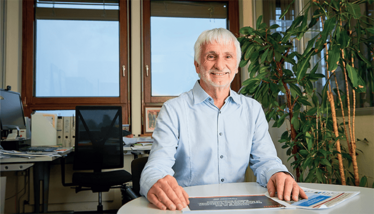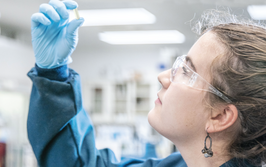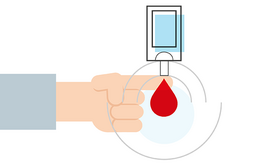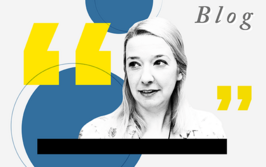Words With the Fearless Leader
Where did DNDi come from – and where is it going?
Angus Stewart | | 6 min read | Interview
This article is part of our DNDi: Medicine Makers Without Borders series. Read the entire feature on our website or tune in to the accompanying podcast for more.

Tell us a little about yourself…
I’m a medical doctor, and I’ve been the Executive Director of the DNDi since I created it in 2003. Prior to that, I spent 20 years in different positions at Médecins Sans Frontières (MSF).
In one sentence, what is DNDi?
We try to bring the best science to the most neglected populations.
And, in as many sentences as you like, what’s the origin story of DNDi?
We were born out of the frustration of MSF doctors like me, who were unable to give patients the proper treatment for severe diseases. Typically these were neglected tropical diseases, such as sleeping sickness, leishmaniasis, and Chagas disease.
Addressing that problem was the basis for our new initiative. It began as a working group, then became a nonprofit organization. Our mission was to bring together players from the public and private sectors to collaborate on research, development, and innovation for neglected diseases. Since then, we’re worked to put in place a portfolio of research and development that can deliver new treatments for populations facing those diseases.
Does DNDi challenge the status quo of drug development?
Yes! We throw down this challenge to help populations who live outside of the profitable market. Neglected diseases affect poor people, and the current system under which pharma operates has no interest in poor people. This disregard is most striking in low- and middle-income countries, but more and more gaps are opening up in high income countries too. We have to challenge this system. We need to see patient needs driving innovation, not profit.
Speaking of profit, how do you persuade for-profit partners to work with you?
Let’s take the example of our collaboration with Sanofi. It was on malaria, working to combine two existing drugs into a new medication. Through collaboration with academia and a small biotech we had secured our formulation, and we then went to Sanofi in search of an industry partner who could help us with scale up and distribution – cheaply – in Africa. We needed it to be affordable – less than $1 for three days of treatment. This aspect was fundamental.
Sanofi accepted our offer and adopted a “no profit, no loss” model. Thanks to that, we were able to get this treatment to 7.1 million people at a price of 70 cents. And, in fact, this was a good deal for Sanofi too. It was good for their reputation, and it also allowed them to establish a presence inside an African country – maybe not a big attractive market today, but one day it could be.
Of all the changes that DNDi has brought about, which ones make you feel most proud?
We have made great headway on sleeping sickness. When we started, we were still using arsenic to treat these patients. Access to safe and effective treatment was a major issue. Thanks to our efforts, access is opening up. We have achieved similar progress in leishmaniasis and other diseases too.
I’m also very proud of the partnerships we’ve developed with players in the private sector. These have been not only with big companies, but also with biotechs and generics companies based in countries such as India, Egypt, Argentina, and Malaysia. Alongside partnerships with governments, public sector institutions, and the academic sector, we’ve built up a very solid index of partnerships.
Are there any areas where you are forging ahead?
Antimicrobial resistance! We incubated a new organization, called GARDP, that is now working on responding to the needs of patients affected by antimicrobial resistance. They don’t quite follow the usual DNDi model. In neglected tropical diseases, your mission is to treat more people. When it comes to protecting existing antibiotics, less treatment is the goal! Additionally, though, you need to develop new antibiotics. But in terms of building partnerships to develop innovation, GARDP and DNDi use – and need – the same model.
What are the biggest challenges that you regularly face in your work?
The central challenge is securing the resources necessary to conduct research and development for extremely neglected populations. The ways to go about doing this are not obvious, and are often riddled with faults. Early on, DNDi’s founding staff opted to diversify our resources because we did not want to end up dependent on a single source. In fact, according to the strategy we formulated, we did not want a single contributor providing more than 25 percent of our resources. This is a good rule to stick to, but it does create work. We need to constantly renew and review the full range of our relationships. We receive funding from governments, from private foundations, and from private individuals. It’s not easy because our focus isn’t one that tends to spontaneously attract interest from these groups.
What’s the biggest surprise from your time with DNDi?
When we first set up DNDi, we were really not sure that we would ever be able to attract private sector partners. Since then, we have built trusting, solid partnerships with private sector partners, and that has been a great and pleasant surprise. The second kind of positive surprise I’d mention is the capacity and enthusiasm from partners working in very difficult settings. For example, in the Republic of Congo we are setting up very intricate projects in very difficult settings. The motivation and talent our partners in those countries have shown while implementing complex science in difficult conditions has been a wonderful surprise.
What can we expect from DNDi in the years ahead?
We are quite ambitious! We just reviewed our strategic plan for up to 2028, which will also be our 25th anniversary. By that year, we aim to have delivered 25 new treatments for neglected populations. Given that we only have 9 treatments so far this might seem ambitious, but we are confident. We have several treatments very near the end of the pipeline, and are expecting approvals from the authorities in various countries.
What lesson have you learned with DNDi that everyone should learn in their lifetime?
You have to keep the patient’s needs at the center of all your decisions. When you have to make a choice and set your priorities in terms of resources and action, you must always put in front of you the needs of the patients. This philosophy is central to our vision. But it’s also something that you need to implement on a day-to-day basis – it’s not something that runs passively in the background. You need to hold these images in your mind: people in very difficult situations, not receiving the treatment that they need.
Between studying for my English undergrad and Publishing master's degrees I was out in Shanghai, teaching, learning, and getting extremely lost. Now I'm expanding my mind down a rather different rabbit hole: the pharmaceutical industry. Outside of this job I read mountains of fiction and philosophy, and I must say, it's very hard to tell who's sharper: the literati, or the medicine makers.


















